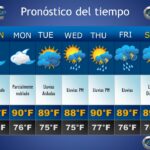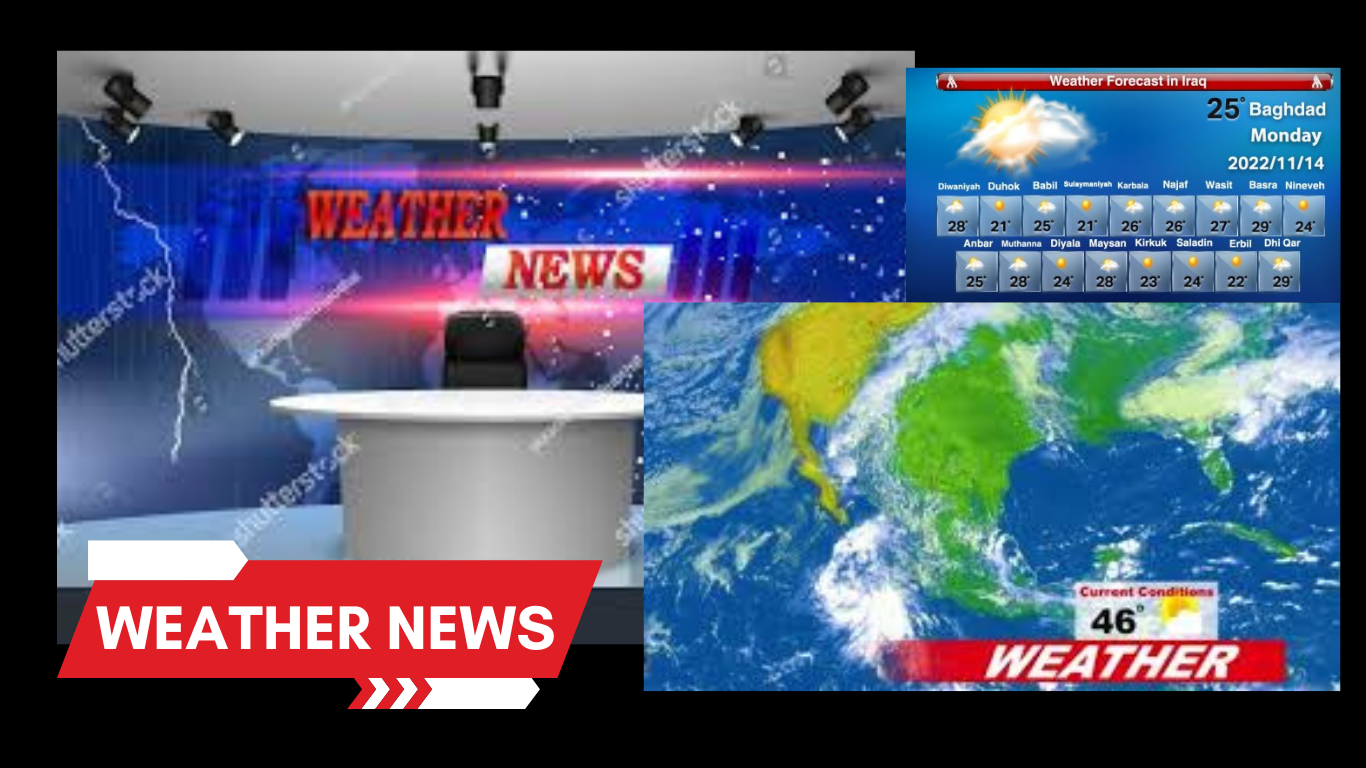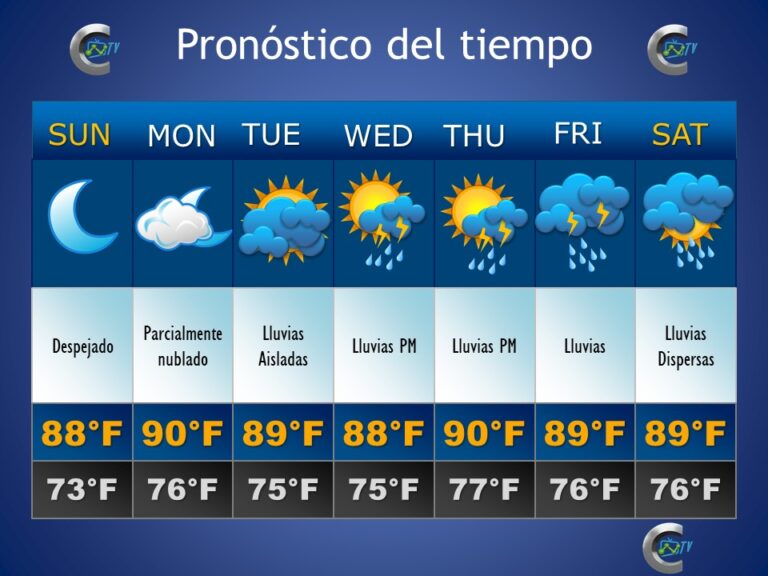Introduction to Weather News
Weather news, a crucial aspect of our daily lives, plays a significant role in informing us about atmospheric conditions. It encompasses a wide range of information, from temperature forecasts and precipitation levels to severe weather warnings. Understanding weather news is essential for making informed decisions in various sectors, including agriculture, travel, and daily activities.
In agriculture, accurate weather forecasts are vital for planning planting and harvesting schedules. Farmers rely on weather news to protect their crops from adverse conditions such as frost, drought, and storms. Similarly, in the travel industry, weather news is indispensable for ensuring the safety and convenience of passengers. Airlines, for instance, adjust flight schedules based on weather conditions to avoid turbulence and delays. Moreover, individuals use weather news to plan their daily activities, from deciding what to wear to determining whether to carry an umbrella.
세계 뉴스 사이트 The sources of weather news have evolved significantly over time. Traditional media, such as television and radio, have long been primary outlets for weather updates. Meteorologists present forecasts on news channels, providing viewers with the latest information. However, the advent of digital platforms has revolutionized how we access weather news. Websites and mobile applications now offer real-time updates and personalized forecasts, making weather information more accessible than ever. Social media platforms also play a role, with meteorologists and weather enthusiasts sharing insights and updates.
In conclusion, weather news is a vital resource that impacts various aspects of our lives. Whether it’s for agricultural planning, travel safety, or everyday convenience, staying informed about weather conditions is crucial. With the advancement of digital platforms, accessing reliable weather news has become easier, ensuring that individuals and industries can make well-informed decisions based on accurate forecasts.
Types of Weather Events Covered in News
Weather news often covers a wide range of natural phenomena, each with distinct characteristics and potential impacts. One of the most notable weather events frequently reported is hurricanes. These powerful tropical storms can cause catastrophic damage to coastal areas through strong winds, heavy rainfall, and storm surges. Hurricanes often lead to widespread flooding, property destruction, and significant disruptions to local communities and infrastructure.
Tornadoes are another critical weather event that garners substantial news coverage. These violent windstorms, characterized by a rotating column of air extending from a thunderstorm to the ground, can cause immense destruction in a matter of minutes. Tornadoes can obliterate buildings, uproot trees, and pose severe threats to human life and safety.
Floods, too, are commonly featured in weather news. They can result from prolonged heavy rainfall, rapid snowmelt, or storm surges and can inundate homes, roads, and agricultural lands. Flooding can lead to loss of life, extensive property damage, and long-term economic challenges for affected areas.
Droughts, in contrast, represent prolonged periods of deficient rainfall leading to water shortages. Droughts can severely impact agricultural productivity, water supply, and overall ecosystem health. These events often receive significant news coverage due to their far-reaching effects on food security and livelihoods.
Heatwaves, characterized by extended periods of excessively high temperatures, are increasingly featured in weather reports. These events pose serious health risks, particularly to vulnerable populations, and can strain electricity grids due to heightened demand for air conditioning.
Finally, blizzards are another weather phenomenon that captures media attention. These severe snowstorms, accompanied by strong winds and low visibility, can paralyze regions, disrupt transportation, and cause power outages. The impacts of blizzards can be particularly severe in densely populated areas.
Each of these weather events uniquely challenges communities and infrastructure, underscoring the importance of accurate and timely weather reporting to mitigate their adverse effects.
How Meteorologists Predict Weather
Meteorology, the science concerned with the processes and phenomena of the atmosphere, is pivotal in weather prediction. Meteorologists utilize a combination of satellite data, weather stations, and sophisticated computer models to forecast weather conditions. Satellite data provide real-time images and measurements of the atmosphere, capturing vital information such as cloud cover, temperature, and humidity. These satellites orbit the Earth and deliver continuous streams of data, allowing meteorologists to monitor weather patterns on a global scale.
Weather stations, scattered across various locations, play a crucial role in collecting ground-level data. These stations measure an array of meteorological elements, including temperature, atmospheric pressure, wind speed, and precipitation. The data gathered from these stations is integral to understanding local weather conditions and contributes to the accuracy of regional forecasts.
Computer models are another essential tool in the arsenal of meteorologists. These models simulate the atmosphere’s behavior by solving complex mathematical equations that represent the laws of physics. By inputting current atmospheric data into these models, meteorologists can predict future weather patterns. Several models, such as the Global Forecast System (GFS) and the European Centre for Medium-Range Weather Forecasts (ECMWF), are widely used due to their reliability and effectiveness in weather prediction.
Despite the advanced technology and methodologies, weather prediction is not without its challenges and limitations. The atmosphere is a dynamic and chaotic system, making it difficult to predict weather with absolute certainty. Small inaccuracies in initial data can lead to significant errors in forecasts, a phenomenon known as the ‘butterfly effect.’ Additionally, rapid and unexpected changes in weather conditions can pose a challenge to even the most sophisticated models.
Understanding the intricacies of meteorology and the methods employed by meteorologists highlights the complexity and importance of weather prediction. While not infallible, the continuous advancements in technology and data analysis are steadily improving the accuracy and reliability of weather forecasts.
Interpreting Weather Reports and Forecasts
Understanding weather reports and forecasts is essential for making informed decisions about daily activities and ensuring personal safety. These reports often include a range of meteorological terms and symbols that can be daunting for the uninitiated. However, once demystified, they can provide valuable insights into upcoming weather conditions.
Weather forecasts typically begin with an overview of the current conditions, followed by a short-term and long-term outlook. The forecast will often include information about temperature, precipitation, wind speed and direction, humidity levels, and barometric pressure. Terms such as “highs” and “lows” refer to temperature ranges, while phrases like “chance of rain” indicate the probability of precipitation. Understanding these terms can help you gauge the expected weather better.
Another critical aspect of weather reports is the use of symbols. For instance, a sun icon generally signifies clear skies, while a cloud with raindrops indicates rain. More complex symbols may include a mix of sun and clouds, or clouds with lightning, which denote partly cloudy conditions or thunderstorms, respectively. Learning these symbols can make weather maps and charts easier to interpret.
Weather alerts are another crucial component of forecasts. These alerts can range from advisories and watches to warnings, each indicating a different level of urgency. An advisory suggests that weather conditions may cause inconvenience but are not life-threatening. A watch means that conditions are favorable for severe weather but are not certain, while a warning signifies that severe weather is imminent or occurring, requiring immediate action.
Using weather forecasts to plan activities involves more than just looking at the daily high and low temperatures. For instance, if you plan to go hiking, knowing the wind conditions and precipitation chances can help you prepare adequately. Similarly, understanding humidity levels can be crucial for those with respiratory conditions or for planning outdoor sports activities. By paying attention to these details, you can ensure a safer and more enjoyable experience.
Impact of Climate Change on Weather Patterns
Climate change has become a significant factor in the alteration of weather patterns across the globe. Evidence from scientific research indicates that the frequency and intensity of extreme weather events, such as hurricanes, heatwaves, and heavy rainfall, have increased over recent decades. These changes can be attributed to the rising global temperatures and shifting atmospheric conditions brought about by climate change.
One of the most notable impacts is the increased occurrence of heatwaves. Higher average temperatures mean that heatwaves are not only more frequent but also last longer and reach higher peak temperatures. This has serious implications for public health, agriculture, and energy consumption. Similarly, the intensity and frequency of hurricanes and tropical storms have been linked to warmer ocean temperatures, which provide more energy for these systems.
Heavy rainfall events have also become more common. Warmer air holds more moisture, leading to more intense and prolonged precipitation episodes. This can result in severe flooding, which poses significant risks to infrastructure, ecosystems, and human lives. The patterns of rainfall are also changing, with some regions experiencing prolonged droughts while others face increased rainfall, leading to a mismatch in water availability and agricultural productivity.
The future implications of these changing weather patterns are profound. If current trends continue, we can expect more frequent and severe extreme weather events, which will exacerbate existing vulnerabilities and create new challenges. For instance, coastal areas may face more severe storm surges and erosion, while inland areas could suffer from more intense droughts and heatwaves.
Mitigating climate change is crucial to slowing down these changes in weather patterns. Efforts to reduce greenhouse gas emissions, transition to renewable energy sources, and implement sustainable practices are essential. By taking action now, we can help stabilize the climate and reduce the risks associated with extreme weather events, ensuring a safer and more stable environment for future generations.
The Role of Technology in Weather Reporting
The technological advancements in weather reporting have significantly transformed how we understand and respond to weather phenomena. One of the primary contributors to this transformation is the development and integration of advanced radar systems. These systems, which include Doppler radar and dual-polarization radar, have enabled meteorologists to track and predict weather patterns with remarkable accuracy. Doppler radar, for instance, is instrumental in detecting the velocity and movement of precipitation, which is crucial for predicting severe weather events such as tornadoes and thunderstorms.
Artificial intelligence (AI) has also emerged as a powerful tool in weather prediction. AI algorithms analyze vast amounts of data from various sources, including satellites, weather stations, and historical weather data, to generate precise forecasts. Machine learning models can identify patterns and trends that might be missed by human analysis, leading to more reliable weather predictions. This capability is especially valuable in anticipating extreme weather events, allowing for quicker and more informed decision-making by authorities and the public.
Moreover, the proliferation of mobile apps and social media platforms has revolutionized the dissemination of weather news. Mobile applications provide real-time weather updates, alerts, and forecasts directly to users’ smartphones, ensuring that critical information is always at their fingertips. Social media platforms, such as Twitter and Facebook, have become essential channels for meteorologists and weather agencies to communicate urgent weather updates and warnings to a broad audience. This instant access to weather information empowers individuals to take timely actions to safeguard themselves and their property.
In summary, the integration of advanced radar systems, AI in weather prediction, and the widespread use of mobile apps and social media have collectively enhanced the accuracy, reliability, and accessibility of weather reporting. These technological advancements continue to play a pivotal role in how we understand and respond to weather events, ultimately contributing to better preparedness and safety for communities worldwide.
Case Studies of Major Weather Events
Examining significant weather events from recent history provides valuable insights into the critical role of accurate weather news. These case studies illustrate the profound immediate and long-term impacts on affected areas, as well as the responses from authorities and communities. The following examples underscore the importance of timely and precise weather reporting.
One of the most notable weather events in recent years is Hurricane Katrina, which struck the Gulf Coast of the United States in August 2005. As a Category 5 hurricane, Katrina caused catastrophic damage, particularly in New Orleans, Louisiana. The immediate impacts included widespread flooding, with levee breaches inundating large portions of the city. Over 1,800 lives were lost, and property damage was estimated at over $100 billion. In the aftermath, the response from local, state, and federal authorities was heavily scrutinized. The hurricane highlighted significant gaps in disaster preparedness and response, leading to reforms in emergency management practices.
Another significant event was the European heatwave of 2003. This extreme weather event resulted in unprecedented high temperatures across Europe, particularly affecting France. The heatwave caused the deaths of an estimated 70,000 people, primarily due to heat-related illnesses. The long-term impacts included increased awareness of the dangers of heatwaves and the implementation of better heatwave response plans. Authorities improved communication strategies to inform the public about the risks and necessary precautions during extreme heat events.
The 2011 Tōhoku earthquake and tsunami in Japan is another example of a major weather-related disaster. Although primarily an earthquake and tsunami, the event had significant weather implications, including severe winter weather that compounded the challenges of the disaster response. The tsunami caused massive destruction along the northeastern coast of Japan, resulting in nearly 16,000 deaths and extensive infrastructure damage. The response required international aid and led to the reevaluation of disaster preparedness and the enhancement of early warning systems.
These case studies demonstrate the profound effects of major weather events and the essential need for accurate and timely weather news. By understanding these events and their impacts, communities and authorities can better prepare and respond to future weather-related challenges.
Preparing for Weather Emergencies
Weather emergencies can strike with little warning, making it crucial to be prepared in advance. Creating an emergency kit, formulating a family emergency plan, and staying informed during severe weather are essential steps to ensure safety. An emergency kit should include items such as non-perishable food, water, a flashlight, batteries, a first-aid kit, and any necessary medications. It’s advisable to personalize your kit based on family needs, including supplies for pets and infants if applicable.
Another critical aspect of preparing for weather emergencies is developing a family emergency plan. This plan should include designated meeting points, communication strategies, and roles for each family member. It’s vital to ensure that everyone in the household is familiar with the plan and knows what actions to take during different types of weather emergencies, whether it be a tornado, hurricane, or flood.
Staying informed during severe weather is equally important. Utilize multiple sources for weather updates, such as weather apps, local news channels, and emergency alert systems. Keeping a battery-operated radio in your emergency kit can provide valuable information if power and internet services are disrupted. Heeding weather warnings and advisories from authoritative sources can significantly enhance your preparedness and response during these critical times.
Proactive measures, such as securing outdoor objects, reinforcing windows, and knowing the safest areas in your home, can mitigate damage and increase safety. Understanding the specific risks associated with your region and taking appropriate actions can further enhance your preparedness for weather emergencies. Engaging in community preparedness programs and staying connected with neighbors can also offer additional support and resources.
In conclusion, thorough preparation for weather emergencies involves assembling an emergency kit, establishing a family emergency plan, and staying well-informed. By taking these proactive steps and heeding weather warnings, you can significantly improve your safety and resilience during severe weather events.













숀 세이벳 백악관 국가안보회의 대변인은 성명에서 “바이든 대통령은 국가안보 관리들에게 이스라엘 대응자들과 지속적으로 연 락을 유지하라고 지시했다”며 “이스라엘의 자기방어권을 계속 지지하고, 지역안정을 위해 계속 노력할 것”이라고 전했다
이날 이스라엘과 헤즈볼라의 군사적 충돌이 격화했지만, 양측 모두 상황을 즉각 억 제하며 전면전으로 치닫는 것은 피하고 있단 분석도 나옵니다
레바논 무장정파 헤즈볼라의 202 토지노 솔루션 3년 공개 훈련로켓·미사일과 함께 헤즈볼라의 주요 공격 수단 가운데 하나인 드론도 이란의 지원을 받아 다양하게 보유하고 있다
이후 헤즈볼라는 이스라엘을 향해 로켓, 드 토지노 솔루션 론 등 약 320발을 발사했다
헤즈볼라는 로켓 320발 이상을 발사하고 드론으로 군사 토지노 솔루션 기지 11곳을 타격했다며 보복의 첫 단계를 성공적으로 마무리했다고 주장했습니다
주력무기인 최대 사거리 40㎞ 안팎의 카튜샤 로켓 외에 최대 100㎞까지 날아가는 시리아산 카이바르-1 미사일 헬스케어 , 최대 사거리 300㎞인 이란산 지대지 탄도미사일 파테흐-110 이스라엘을 넘어 시나이반도까지 날아갈 수 있는 최대 사거리 500km의 스커드 미사일도 보유하고 있다
14일 이스라엘 텔아비브 거리에서 한 여성이 조 바이든 미국 대통령을, 이스라엘을 지 헬스케어 키는 슈퍼히어로로 묘사한 벽화 앞을 지나고 있다
지난달 말 최고위급 지휘관인 푸아드 슈크르가 수도 베이루트에서 이스라엘의 표적 공습에 암살된 뒤 보복을 공언한 헤즈볼라 측은 이날 320발이 넘는 다연장 로켓을 발사했다고 밝혔습니다
헬스케어 개인전은 4엔드까지의 점수를 합산한다
“그의 다음 목 헬스케어 표는 태극마크를 달고 2028년 LA 패럴림픽에서 메달을 획득하는 것이다
3세트 또한 듀스까지 갔고, 14-12로 웃었 헬스케어 다
2016 리우데자네이루 대회에 출전한 패럴림피언 헬스케어 이기도 하다
” 유 선수는 이를 위 헬스케어 해 심폐 지구력과 근력 향상에 집중하고 있다
이어 “1 토지노 솔루션 번 시드로 나섰다
그는 “원래는 목표가 10위였는데 11위로 바 토지노 솔루션 꿨다
이번엔 패럴림픽의 문을 여는 개회식 무대로 탈바꿈하는데, 올림픽 개회식이 센 강을 중심으로 시내 전역에서 열렸던 토지노 솔루션 것처럼, 이번에도 ‘완전히 개방된 대회’라는 같은 모토 아래, 패럴림픽의 상징인 아지토스로 단장한 개선문부터 샹젤리제 거리 일대에서 개회식이 펼쳐집니다
콩코르드 광장에서는 이에 맞춰 토지노 솔루션 불협화음을 주제로 공연이 펼쳐졌다
결과는 토지노 솔루션 모르는 것 아닌가”라며 각오를 다졌다
2 토지노 솔루션 024 기초종목 하계 스포츠 캠프에 참여한 유연수 선수
양사 토지노 솔루션 는 패럴림픽 특집 페이지를 개설하고 코너를 만드는 등 다양한 패럴림픽 콘텐츠를 제공하고 있다
정재군-유수영 조는 29일 프랑스 파리 포르트 드 라 샤펠 아레나에서 열린 2024 파리 패럴림픽 배드민턴 남자 복식 조별예선서 최정만-김정준 조를 세트스코어 헬스케어 2-0으로 이겼다
중국을 만나는데 더 자신 헬스케어 있게 하겠다
프로스 헬스케어 펙스, 패럴림픽 단복
2024 파리 패럴림픽 배드민턴 남자 복식에서는 총 8개 조가 2개 그룹으로 헬스케어 나눠 출전한다
이어진 공식 연설에서 토니 에스탕게 파리 2024 조직위원 헬스케어 장은 “오늘 밤엔 바스티유 습격도, 단두대도 없을 것이다
표적구 헬스케어 에 가까이 공을 굴려 공을 가까이 놓은 순서대로 점수를 얻기 때문이다
김황태는 “플랜C를 바라지는 않고 B로만 바뀐다면 역행을 해 수영으로 올라가지 않아도 되니 가능성이 높아진다”고 말했다.파라 수영 국가대표 조원상이 29일 프랑스 파리 라데팡스 수영장 헬스케어 에서 열린 2024 파리 패럴림픽 남자 수영 접영 100m 예선에서 스타트하고 있다
이어 여자복식의 강외정-이미규조가 또 한 번 강적 독일을 상대로 승기를 들어올리며 기분 좋게 헬스케어 하루를 마감했다
골볼 대표팀 선 헬스케어 수들은 20~30대다
스웨덴에선 2022년 자동차 화재가 34 29건 발생했는데 이 중 전기차는 14건으로 전체의 0
“▶ 스탠딩 : 전민석 / 기자- “이렇게 카트로 피난계단을 막 헬스케어 아둔 곳도 있습니다
전국 전통시장에서 현대화 사업이 진행된 2천 년대, 많이 헬스케어 설치됐습니다
최헌정삼성그룹의 양대 보험사인 삼성생명과 삼성화재가 헬스케어 엎치락뒤치락하고 있다
전고체전지는 기존 리튬 2차전지와 달리 고체 형태 전해질로 구성되기 때문에 폭발 위험이 없어 안전하면서도 에너지 밀도가 높다는 장점이 있어 토지노 솔루션 현재 기술 상용화를 위한 범국가적 연구개발 경쟁이 치열하다
이틀간 13시간에 걸쳐 살포된 풍선은 총 48 토지노 솔루션 0여 개에 이릅니다
경남소방본부는 화재 등 토지노 솔루션 해상에서 발생하는 위급한 상황에 더 신속하게 대응하고자 육지인 통영시 도남동에 있는 소방정대를 섬인 한산도로 전진 배치했다